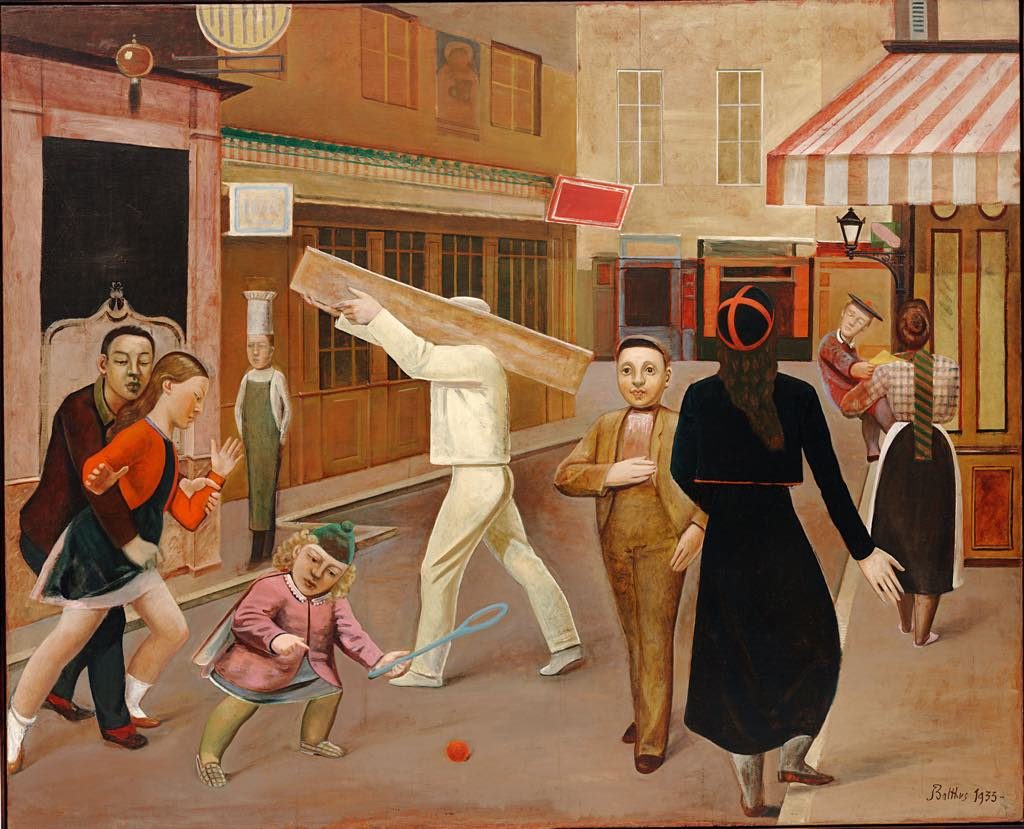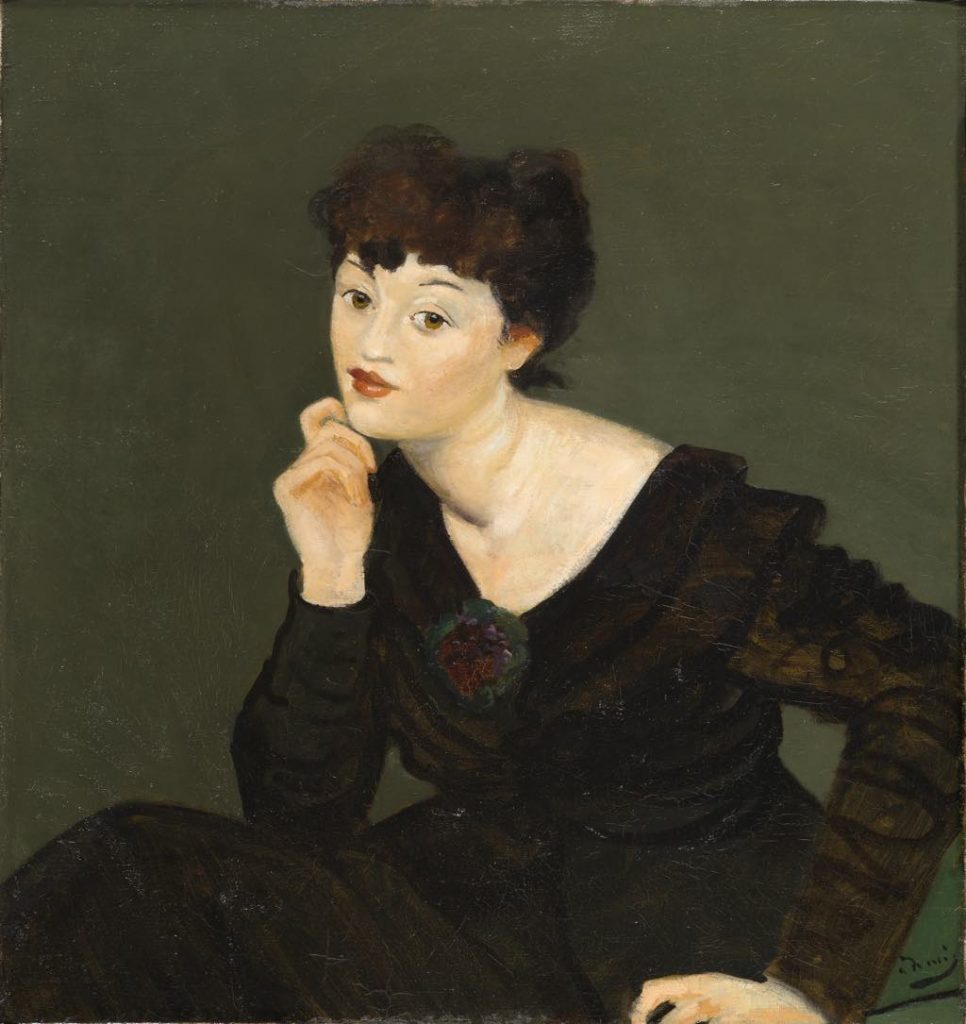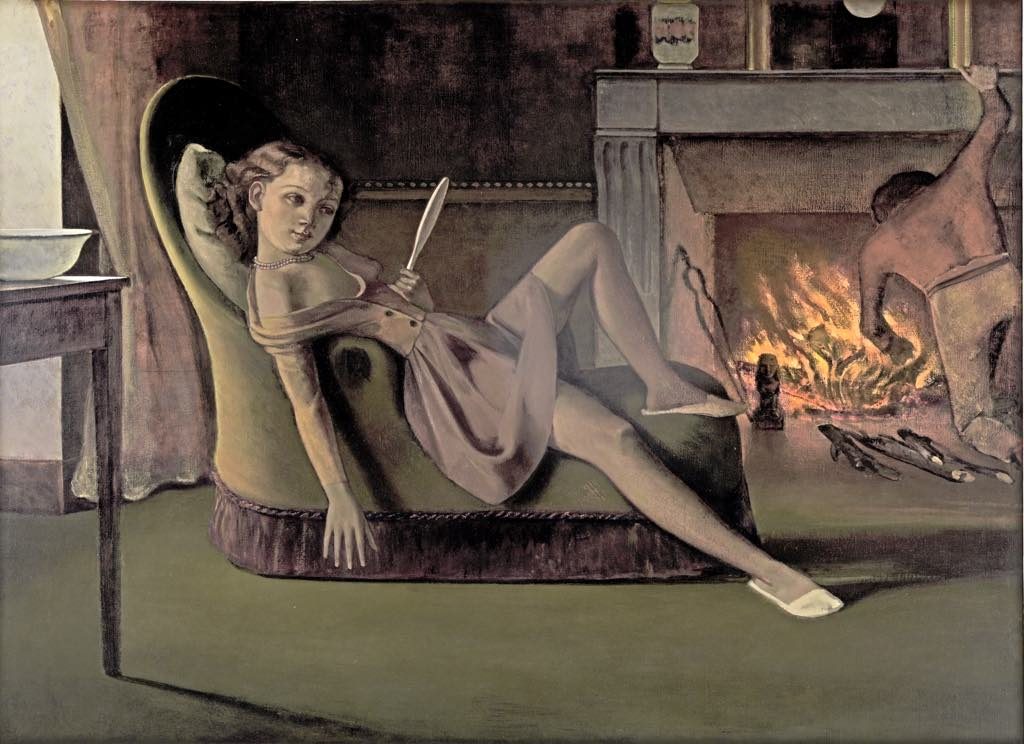
On the face of it, André Derain (1880-1954), Balthus (1908-2001) and Alberto Giacometti (1901-66) would seem to have little in common, but it turns out that the three artists were lifelong friends, beginning around 1933, and had a not-insubstantial influence on each other’s work. The Musée d’Art Moderne de la Ville de Paris has used this friendship as a pretext for an unusual and ambitious (over 350 works dating from around 1930 to ’60) exhibition that brings them all together: “Derain, Balthus, Giacometti: Une Amitié Artistique.”
All three were part of the avant-garde art scene in 1930s Paris, flirting with Surrealism and frequenting then and later the great artists and thinkers of the day, among them Antonin Artaud, Max Jacob, André Breton, Louis Aragon, Jean Cocteau, Albert Camus, Samuel Beckett, Jean-Paul Sartre and André Malraux.
In the various sections of the exhibition, we see how all three were influenced by primitivism and classicism, exemplified by many examples of their copies of primitive, antique and Old Master works, and how they shared both subject matter and models.

Derain is a troubling case. His early Fauve works are brilliant, but he later adopted the rather reactionary “back-to-origins” neoclassical style so many artists resorted to after World War I (the permanent collection at the Musée de l’Orangerie offers a good overview of this transition). If you look at Google Images, you will see almost nothing but Fauve works by him. Yet, no less an artist than Giacometti wrote in the 1950s, referring to Derain’s post-Fauve work, that his friend was the painter who interested him the most and from whom he had learned the most since Cézanne. Was that just the friend in him speaking? In any case, one of the goals of this exhibition is to help rehabilitate Derain’s post-World War I reputation (which was further harmed by his trip to Nazi Germany during World War II).
One of the Derain paintings in this show I was most drawn to, a powerful portrait of the painter Francisco Iturrino, turned out to have been painted in 1914. After the war, many of Derain’s paintings in the show look positively dull and derivative, like a poor man’s Picasso or Cézanne or even Old Master – especially when hung next to deeply strange works by Balthus with related subject matter (the two artists sometimes worked in the same studio).
But every once in a while he surprises, as in a touching painting from around 1923 of a young woman’s bare back, glowing with light against a simple brown background. Her head is tipped forward and her face invisible. Another is the striking “The Painter’s Niece” (1931), in which a girl in a pale yellow dress holding a wide-brimmed straw hat decorated with red flowers (the color is picked up in a basket of fruit sitting on the chair next to her) kneels with one leg on a chair, looking off to the side with her big cat eyes.
Speaking of cats, Balthus was famously fond of them, and big-headed versions appear in many of his works. He was also famously fond of painting young girls in erotic situations, and there are several examples here.

The most erotic in this show are not necessarily the ones with naked girls. There are a couple here in which a young girl lies on the floor on her stomach reading, her butt raised, with her little skirt flipping up suggestively in the back. You can’t see anything, but the sexual charge is heavy, as it is in “Les Beaux Jours” (1944-46), in which a fully clothed girl slumps sluttily on a chaise lounge admiring herself in a hand mirror, with the top of her dress slipping down on one side while in the background a shirtless young man tends a fire flaming brightly in the otherwise gloomy room.
In the less suggestive “La Chambre” (1947-48), a girl with a Mona Lisa smile and no clothes on (except red socks, shoes and a towel draped over her shoulder) stands boldly facing the viewer, holding out her arm as if to say, “Here I am! Aren’t I wonderful?” Another, fully dressed girl is crouched on the floor next to a chair and twists around from the book she is reading to looks up at the standing girl. This enigmatic picture seems to be telling a story you can’t quite understand, as do most of Balthus’s paintings.
Even his otherwise classical still lifes in this show leave a deep impression of violence and mystery, with knives plunged into loaves of bread and broken glasses. In “Le Goûter” (1940), a woman stares so angrily at a still life set up on a piece of furniture that you suspect there might be a body hidden inside the chest, as in Hitchcock’s film Rope.
Balthus may be controversial for his obsession with young girls (and those mentioned above are certainly not his most controversial works), but I must admit that I found his paintings – with their eerie ambiances and detached figures caught in frozen movement (as in the very surreal “La Rue,” 1933, pictured at the top of this page) – far more intriguing than most of Derain’s.

In terms of his art, Giacometti is something of the odd man out here, with his so-well-known spindly sculptures and scratchy paintings of small figures centered in large spaces, but the show also includes some of his witty (and completely different) early sculptures, made when he was still under the sway of Surrealism, as well as some early paintings in an impressionistic style, notably a self-portrait and a few portraits of his father.
The work all three artists did for various theatrical productions is featured here, and we also have Balthus’s odd illustrations for an edition of Wuthering Heights.
I’m not sure how important it is to know about this three-way friendship, but it is an unusual approach, and the sprawling show is rich in works of art worth seeing.
Favorite
Love it…so informative!
Heidi…. impressive. looks really great…
Bisous, Helen.